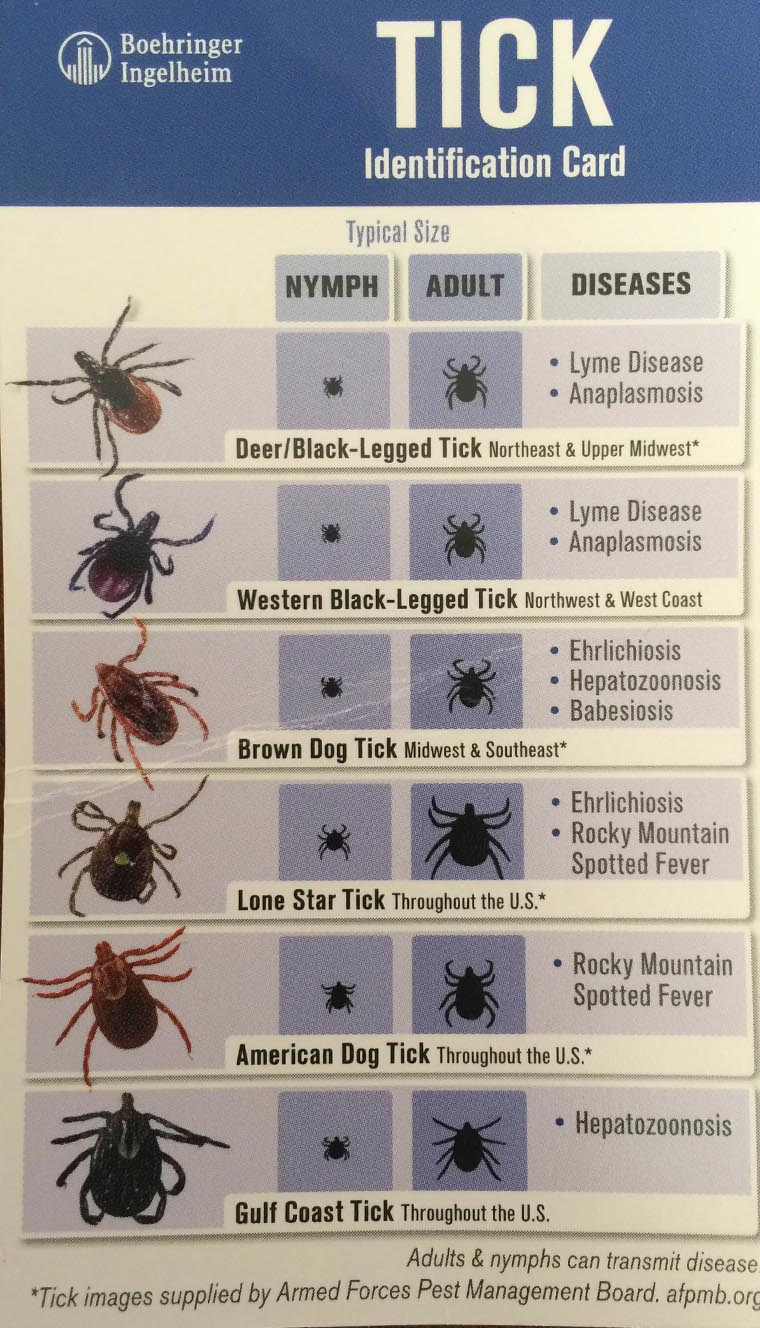Tick removal can be very tricky. You have to make sure when removing a tick that you get the whole thing, including the embedded head. You also must make sure not to apply pressure to the body of the tick, as this can cause the tick to regurgitate and potentially infect the pet or person with tick born diseases.
Below are a number of tools that make tick removal easier:
The Ticked Off Simple Tick Remover (http://www.tickedoff.com) is basically a small spoon with a notch cut into it. Simply slide the notch under the tick until it’s as far as it will go, and then lift the tick away.
The Tick Twister Remover (http://www.ticktwister.com) is a small plastic object with a notch at one end. Simply slide the notch under the tick, and twist until the tick comes away.
The Tick Nipper (http://theticknipper.com) is a bit like tweezers, but designed to slide under the tick’s body and grasp it just behind the head to allow you to pull head and body out safely.
All three of these tools are easy to use and will remove the entire tick without crushing or removing the mouth parts.
You can also use your tweezers or fingers to remove a tick, but this is very tricky to do without leaving the head behind or crushing the body of the tick.
Once the tick is removed, the safest way to dispose of it is to drown it in rubbing alcohol. An old pill bottle works really well as a tick death jar. Simply fill it 1/3 of the way with rubbing alcohol and add ticks as you remove them. Then place the lid back on to prevent the alcohol from drying up. One vessel will often work for the whole season. Regular water will not work as ticks can survive in regular water and will often walk right up the side of the vessel the water is in to escape. It is very hard to crush a tick to death because of the size of most small ticks as well as the armor like exoskeleton. You can wrap a tick in tape or tape it to a white card, but the tick can live for a very long time with little air or food.
Clean the area where the tick was removed with rubbing alcohol or an iodine scrub. Remember to wash your hands as well. If you notice redness or swelling around the area where a tick was removed consult your vet or doctor to ensure that an infection is not starting.










